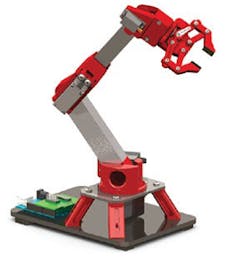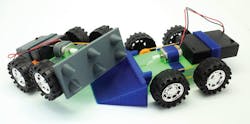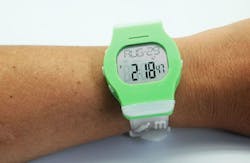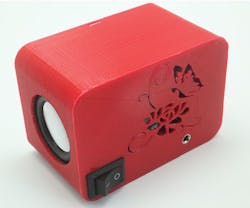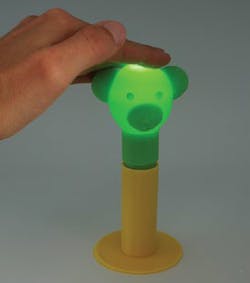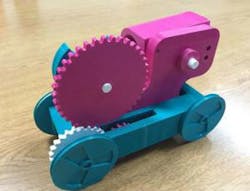Education continues to be a major concern for many Americans, which has led many companies to jump on board to lend a hand. This article looks at a few of the reasons why companies are pushing for education, and what some 3D-printing companies are doing to step up to the plate.
First, the amount of money spent by the U.S. on education and kids is unparalleled. This, of course, turns youth education into a large marketplace for an array of companies. Government benefits and funds for being in the education game can expand those pockets even further.
Second, children growing up with a particular brand while attending school—Apple anyone?—tends to be a huge advantage. Kids who are exposed to brands at a young age are more likely to be loyal to those brands later on. Third, by targeting youth education, a company can hit multiple verticals in one swoop. For instance, 3D-printing companies can target kids’ entertainment and education, and tap into the Maker movement, among many other avenues. Finally, selling great products to make kids smarter and better prepared for life no doubt helps a company’s image.
Unfortunately, when 3D printing started hitting the schools, some companies were just looking for headlines like “Company X Donates a Bunch of 3D Printers to a Poor School.” I personally spoke to multiple teachers who said they had a 3D printer, but after running out of filament, the education went from 3D printing to a course on how to collect dust. The only thing learned was that there was a fancy device that could print a bunch of chess pieces.
3D printing could become an instrumental learning tool, helping to illustrate learning fundamentals, inspiring creativity in learning, and educating students to think outside the box while learning a skill that may benefit them in real life as they move from the school environment. Understanding computer-numeric-controlled devices like a 3D printer is a sought-after skill in industry. In addition, the scientific and creative mind that understands how to design for 3D printing will continue to be valuable in the manufacturing sector.
Below are some companies that appear to have a good plan to address educational needs, giving teachers what they need to keep their 3D printer from becoming like so many of our household treadmills.
Afinia
The first company that I ran into, years ago, was Afinia. Most of the company’s market is in the educational arena.
Afinia understands that companies need to do more than just drop off a printer. They need to develop a fiscal plan for what to do when the filament runs out. Teachers need to be trained. No matter how user-friendly a printer says it is, they will need someone who understands its basic functions—how to level the build platform, replace nozzles, and troubleshoot issues associated with failed prints. This might be simple, but teachers are already maxed out. Without a plan and some investment, why would teachers take the time they don’t have to try to figure out something they might have never seen?
Once a financial plan is worked out, and teachers understand the technology, the school needs a reason for the 3D printer to be there. If all that’s being done is 3D printing of chess pieces, there’s no reason to have this equipment taking up space in already overcrowded schools.
The 3D printer needs to be worked into the lesson plan. Printing out learning tools, STEM kits, and other materials not only helps students learn, but it brings resources into the classroom that the school couldn’t otherwise afford. Even now, with some savvy STEM kits priced from $10 to $30, when you have 30 students in a class, it isn’t possible to provide these kits en masse. However, if the components can be printed, and a syllabus downloaded that aligns with what the school is teaching, it can dramatically reduce the cost.
Offering many platforms and syllabuses, here are a few things students can build:
The M.I.R.A. 5-Axis Mini Industrial Robot Arm: Robotics and 3D printers are the fastest-growing technologies used in education and research. M.I.R.A. is the ideal platform for teaching for teaching science, technology, engineering and math (STEM) principles at all levels.
Derby Dash: This is a great STEM project for teachers to further teach on topics such as electric motors, gears, kinematics, and basic principles of physics, such as the conservation of energy.
Heart Rate Watch: In this project, students will design, print, and build their very own heart-rate monitor. This project is great for further teaching on topics such as 2D drawings, electrical energy storage, voltage conversion, and electronics. In addition, a heart rate watch could be worked into a health or gym class.
Mini Boom Box: Students can build a speaker that connects to their phone, MP3 player, or other portable device. This project is great for further teaching on topics such as soundwaves, amplifiers, and speakers; circuit diagrams; and electronics in general.
Night Light: In this project, students learn about the basics of design and development—design requirements, market research, creating and developing concepts, CAD modeling, 3D printing, and assembly electronic components.
XYZ Printing
Asserting that its printers are cost-effective and easy-to-use, XYZ Printing has been working in education K-12 for years now. Not only does the company offer syllabuses with its STEM kits, but it handles a range of projects from complex to simple, whether printing out molecules or a simple piston engine train. The company’s user-friendly focus goes beyond the printers, though. XYZ Printing offers classroom bundles to combine everything you need in a convenient package.
MakerBot
MakerBot and the township of Montclair, N.J., are working together to educate the entire student body—a total of 6,625 students—with 3D printing district-wide. Back in 2015, MakerBot and Montclair partnered to establish the first district-wide network of desktop 3D printers, in each school, from the elementary level all the way up to Montclair State University.
Currently, 3D printers are in over 5,000 schools across the U.S. While 3D printers for schools received some good initial headlines, the burden that came with them wound up being passed back and forth from the schools to the 3D-printer companies. Today, it looks like technology and school systems have started to find some common ground and solutions that will surely progress 3D printing to new levels, especially as student raised on this technology move onto to STEM or management positions.

